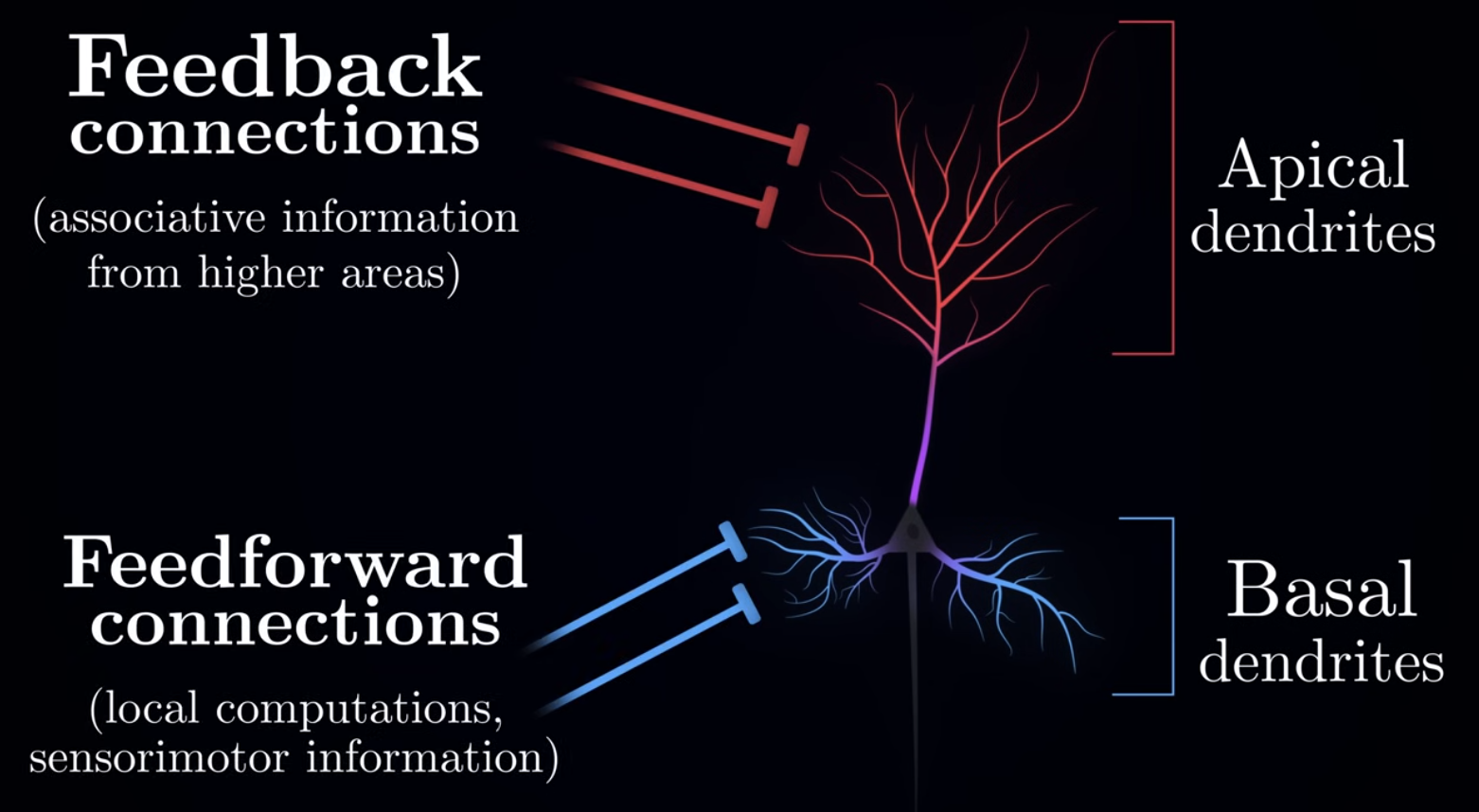
Pyramidal Neurons/cells are a special type of excitatory neuron contained within the Cerebral Cortex. They are the most populous member of the excitatory family in the brain areas they inhabit, with about of all neurons in the mammalian cerebral cortex being comprised of them.1
Structure
Pyramidal Neurons have a very characteristic shape. Unlike other neurons, they have only one primary “trunk” dendrite, which we call the the Apical Dendrite(or apical trunk).
This apical dendrite reaches up towards the surface of the cortex, and then branches out extensively, like a crown of a tree.
Closer to the cell body, on the lower half of the cell Soma, there is a “bushier” set of dendrites that we call Basal Dendrites. They spread out more horizontally.
These two dendrite clusters don’t just look different, but they also serve different purposes for the Pyramidal Neuron as a whole. The Apical Dendrites use Feedback connections, which consist of associative information from higher areas, while the Basal Dendrites use Feedforward connections, which consist of local computations; namely sensorimotor information.

Footnotes
-
Gidon, A., Zolnik, T. A., Fidzinski, P., Bolduan, F., Papoutsi, A., Poirazi, P., Holtkamp, M., Vida, I., & Larkum, M. E. (2020). Dendritic action potentials and computation in human layer 2/3 cortical neurons. Science (New York, N.Y.), 367(6473), 83–87. https://doi.org/10.1126/science.aax6239 ↩